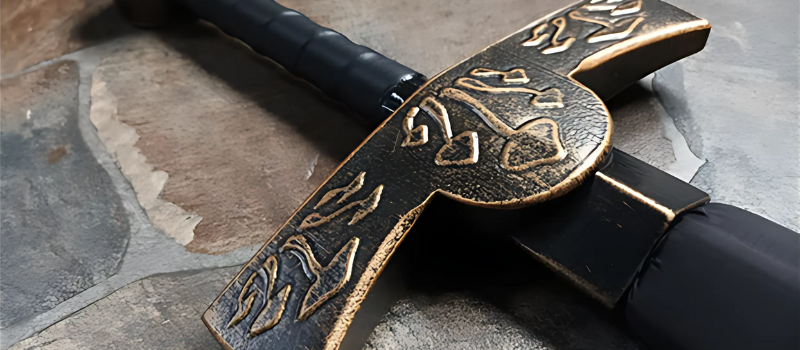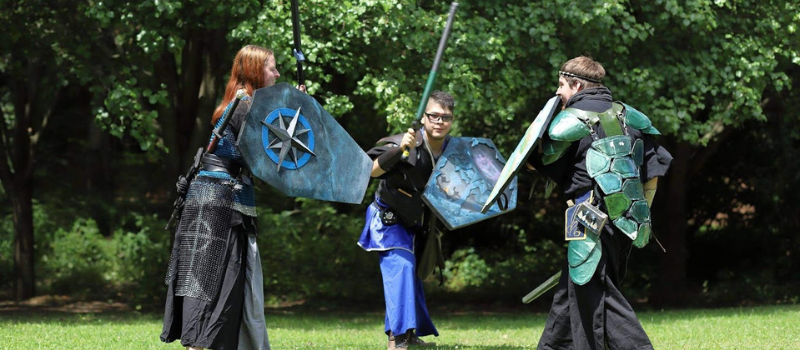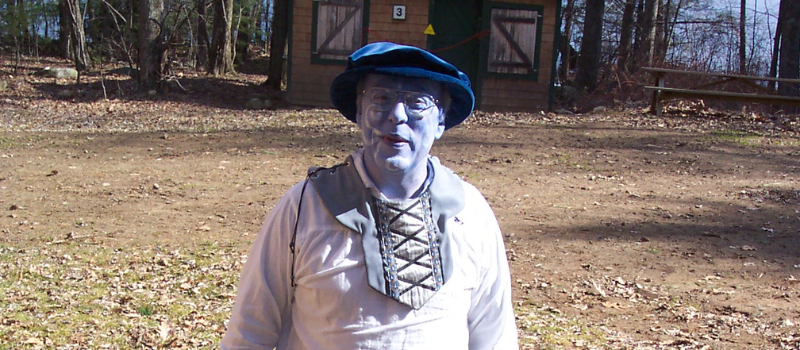LARP Weapons Part 3: Weapon Making
We’ve come a long way from PVC and duct tape

Introduction - Why a Blog About LARP Weapons
Welcome to the third blog in our series about LARP weapons. As previously shared, we picked this topic because weapons are an integral part of LARPing and with this series, we want to build our knowledge of this important part of our industry, provide something meaningful to the LARP community, and it's fun to be a bit nostalgic. We certainly have come a long way from PVC and duct tape.
Completing the research and writing these three blogs still does not make me an expert, but I have high hopes that I am achieving the above goals and I’m immensely enjoying the conversations. If you missed either Part 1: Types of Weapons or Part 2: The History of LARP Weapons, please do check them out. We’d love to hear from you about your favorite LARP weapon stories.
The Blog Series
● PART 1: Types of Weapons - In this blog, we describe weapons and armor, categorize them by type, and reference where they may be used by different LARPs. MAR 2024
● PART 2: History of LARPing Weapons - We take you back to the late 1980s and early 90s and trace the changes in LARP weapons over time. AUG 2024
● PART 3: Weapon Making - This blog will talk about the materials and process of making a weapon. NOV 2024
● PART 4: Merchants - In our final blog, we will provide a list of merchants where you can purchase weapons, along with evaluations of their offerings, websites, and any testimonials or feedback we have gathered from our interactions with LARPers over the course of our interviews. COMING JAN 2025
In this blog, we are also featuring Smith Forge Studios, a merchant who specializes in making and selling weapons. The owner and craftsman of this business was very gracious and spent several hours taking a stroll down memory lane. He also shared a step-by-step process as to how he crafts his weapons. Please enjoy this blog and see our call to action at the bottom of the blog. We invite you to reach out if you are a merchant, know a merchant, or have any weapon stories to share.
 Weapon Making: Methods and Materials
Weapon Making: Methods and Materials
The type of material used to make weapons varies based on weapon type; boffer, latex or padded, and the intended type of combat rules in which the weapon will be used: touch combat or full combat.
- “Boffer weapons” are constructed with PVC, covered with pipe foam, and then wrapped with duct tape. These are frequently used for LARPs that utilize touch combat rules. “Heavy Boffer weapons” use strapping tape to provide more reinforcement at the core. This technique is used to support full combat versus touch combat.
- “Latex weapons” are constructed with molded foam and latex rubber and are used with touch contact rules. They often are made to look more realistic and do not have much padding.
- “Padded weapons” or “Foam weapons” seem to be the most common construction for US-based LARPs. They are typically built with fiberglass or carbon fiber cores rather than the traditional PVC to make them lighter. They include a significant amount of padding.
So whether you are DIY or buy from one of the key LARP weapon vendors like B3 Imagination Studio, Calimacil, Mytholon, Epic Armory and Ateliers Nemesis, each weapon starts with a core that is covered for protection and then finished for utility or aesthetics. Here are some common materials used in current LARP weapon making.
LARP Weapon Cores
Core type considerations include weapon length, weight, durability, and price. PVC and Fiberglass are durable water-proof man-made materials used in construction and to make fishing rods, golf clubs, kites, and of course, LARP weapons.
- PVC: PVC comes in 2 gauges, 40 and 80. The material supports short and long swords, however, longer weapons have more flexibility and more whip. PVC is heavier than fiberglass and less durable. The cost is comparable to fiberglass.
- Fiberglass: A common weapon core used for swinging weapons up to 6’. They are lighter than PVC, more durable, and competitively priced.
- Carbon Fiber: Rods are more rigid/stiff core making them stronger but potentially less durable. They are more expensive than fiberglass.
LARP Weapon Padding/Covering
Weapon padding or covering considerations are tied to safety and combat rules. Various types of foam are used to cover the core. Pipe insulation surrounds the core while other foam types like EVA are cut, carved and glued together for a more realistic and decorative effect.
- EPDM Foam is the material most typically used for pipe insulation sleeves and their primary construction benefit is better resistance to high temperatures. It is used to provide padding for boffer and padded LARP weapons.
- Closed-cell pipe insulation comes in a variety of thicknesses
- Open-cell (couch seat cushion) foam is often used for additional padding for tips in games that allow thrusting.
- XLPE foam or Cross-Linked Polyethylene Foam is a flexible closed-cell type of polyethylene foam.
- EVA foam is more rigid and dense foam than polyurethane foam, making it better suited for applications that require greater structural support.
LARP Weapon Finishing Touches
Finishing touches have the ability to make your weapon unique. Whether it’s different colored accents in duct tape or dipping in rubber coating and then painting, a weapon gets its looks in this last phase.
- Duct Tape: The universal "fix anything” product is often used to finish a weapon. Gray is the most common color to simulate the silver of a sword but black and red are common as well. I previously mentioned my set of claws, finished in red.
- Specialty rubber coating such as Plasti Dip ® is used as a covering after the foam is glued together. Members of a Facebook group recommend the spray version with 3-4 coats. Check out this group for photos of some incredible projects Plastidip Artists
- Acrylic paint finish and Core foam Paint are used prior to the final sealer or top coat. There is lots of advice on line to achieve different effects like wood and metal.
- Leather: some designs, especially armor add leather accent components.


A Special Merchant Story - Smith Forge Studios

Our third featured merchant is Smith Forge Studios located in Brooklyn, Connecticut, and owned by Gary Smith. Gary is a graphic artist and also co-owns and GMs Myth, a medieval LARP also located in CT. You can find his business on FACEBOOK and his LARP on our “FInd a LARP” tool. With over 600 games listed, “Finding a LARP Near Me” is quick and easy.
Gary made his first weapon, a scimitar, in 1989 in Leesburg, FL before he truly got interested in LARPing. In fact he shared that it was his interest in weapons. Specifically fighting 2 handed, that led him to LARP. Gary played D&D like many of us and joined a LARP in Albany NY in the early 1990’s.
During our conversations, he shared fantastic stories of his 30+ years of weapon making. He made his initial weapons with traditional, old school, pipe insulation and black duct tape. Over the years he transitioned through various materials seeking better safety and more realistic-looking weapons. Today, he uses an "analog" method, layering laser-etched and cut EVA and XLPE foam over a fiberglass core. This process, seen in his shield build photo journal and portfolio, involves assembling and finishing each piece by hand, which some clients especially value for its artisanal touch.
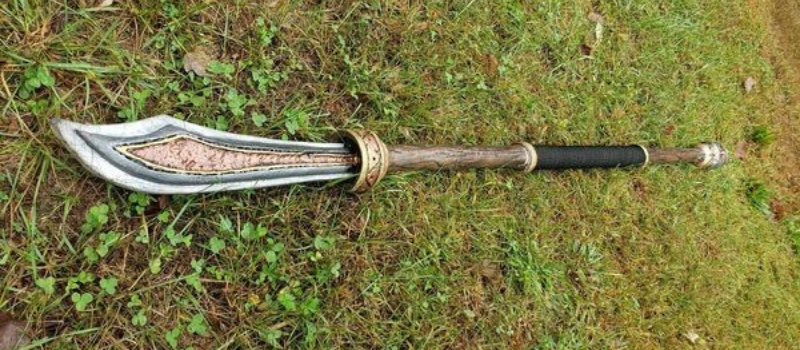
Smith Forge Studios doesn’t limit types of materials or techniques. While Gary most commonly uses 7-9 lb Flex- IT foam, he uses a variety of cores and finishing materials. Above is a photo of a common foam and plasti-dip process.
Gary also uses 3D printing and molding for larger mass production runs. The ability to replicate custom-like weapons or armor pieces as seen below makes Smith Forge Studios a solution for quantity as well as quality.

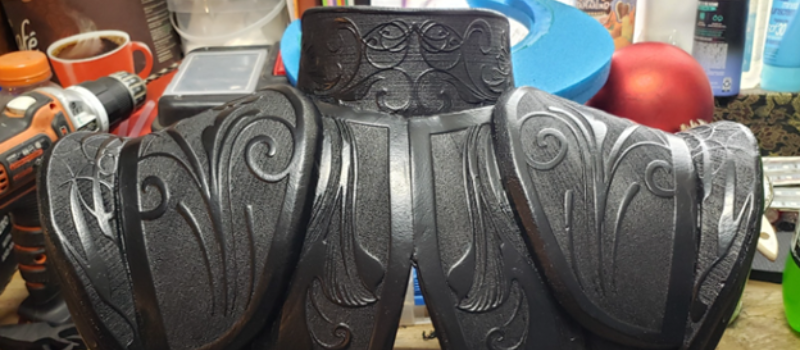
Gary describes his business as “Custom & creative solutions for nearly every need.” “Multi-media art solutions that work”.
Specializing in LARP, Cosplay, Theater, Film & day-to-day props, costumes and high tech wizardry. Gary stated, “There is a lot of silicone, urethane and gluing that occurs”.
If you are ready to build your own weapon you will find a moderate amount of DIY weapon info online. The advice that each of our featured weapon makers will tell you, is that there is a lot of trial and error and that most DIY weapon instructions can’t include all the years of experience and lessons learned.
Gary has a wonderful step-by-step series of photos and instructions for his Autumn Leaf Themed: EVA Foam LARP Punch Buckler.

Closing
This blog took a deeper look at how weapons are made today. We explored the materials and methods used and we sat down with Gary Smith to learn about his 30+ year journey making weapons and props. These photos are examples of Gary’s work. We’ve touched on the basics of cores, coverings and finishing touches. The possibilities are as endless as your imagination.
Call to Action
If you are or know of a LARP Weapons merchant, have a great weapon story to share, or have any feedback about this article we’d love to hear from you, please reach out to weaponsblog@larportal.com.
If you are a game owner or thinking about starting a game, let LARP Portal simplify your administrative processes and give you and your players more time for LARPing. Contact us at demo@larportal.com today for a free demo.
Latest Blogs


.png )


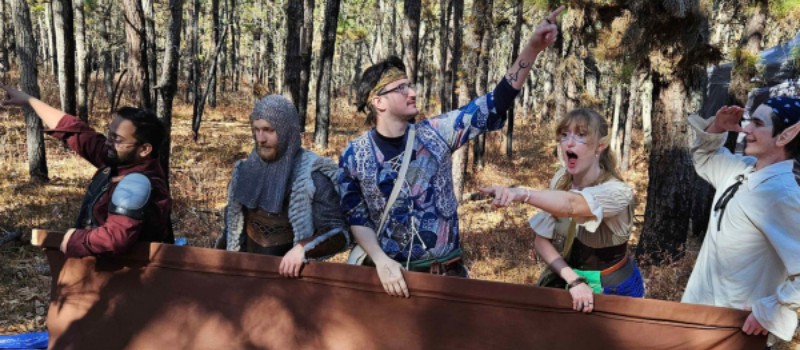

.png )
